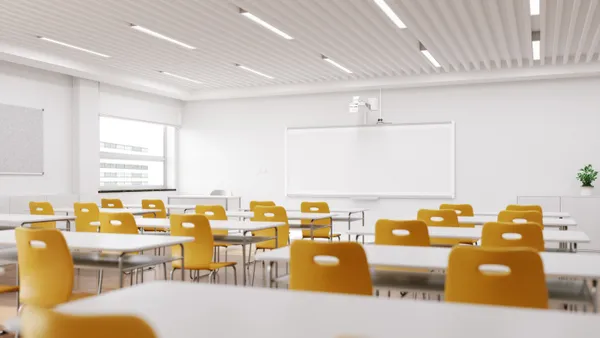Dive Brief:
- Seven years after the end of the Great Recession, states are still spending less per student in K-12 schools, and in nine states, per-pupil funding was down 10% in 2016 compared to 2008, according to a new Pew Charitable Trusts’ report focusing on the “lost decade” in state economic growth.
- Confirming other reports showing ongoing effects of the recession, the report shows that education spending remains lower than before the recession in more than 20 states. “Although the 18-month recession, which ended in June 2009, may seem long ago, a closer look reveals that many states are still coping with lingering — maybe even lasting — effects on their finances,” the report says.
- In total, states “missed out on an estimated $283 billion” in tax revenue from 2008-2018, according to the report, which also looks at the effects on state infrastructure, aid to local governments, the state workforce, reserve funds, pension liabilities and higher education — which was down 13% in 2018 compared to the start of the recession.
Dive Insight:
The report also addresses teachers’ salaries, which, in 2016, were still below pre-recession levels. An April salary report from the National Education Association shows that, accounting for inflation, the average classroom teacher’s salary in the U.S. has declined 4.5% since 2009-10, The authors of the Pew report note that even when overall per-pupil funding increases, that doesn’t mean districts are automatically directing those funds to salaries, additional support personnel or classroom resources.
That tension has been playing out in the New Haven Unified School District teacher strike in California and was also a point of contention in the Los Angeles Unified School District strike. Unions argue that district leaders are sitting on reserve funds, while district officials are projecting ongoing cuts.
And with some predicting another recession, districts are likely thinking it’s wise to have healthy fund balances. According to Pew, reduced spending could be "cemented in place" if the fiscal outlook doesn't improve before another downturn hits.
A 2016 article from the Kansas Association of School Boards addressed this issue, outlining eight reasons why districts would want to “put more money in the bank” at a time school leaders say they are underfunded. These include delayed payments from the state, funds earmarked for particular purposes, such as grants, and to earn or maintain higher bond ratings.













